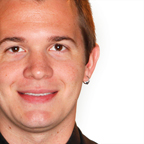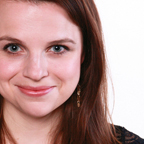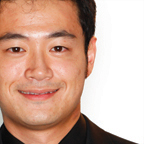New World’s Concerto Showcase program highlights two rarely heard solo instruments
The New World Symphony’s annual Concerto Showcase concerts provide an opportunity for some of the orchestral academy’s gifted players to shine in the solo spotlight. In the first of this season’s two programs on Saturday night at New World Center, works for such rare solo instruments as bassoon and harp as well as a violin score more frequently heard on classical radio stations than in live performance were the featured bill of fare.
The bassoon usually fills out the bass line in works from the classical era or is utilized for spooky effects in such pieces as Dukas’ The Sorcerer’s Apprentice or Berlioz’s Symphonie Fantastique. In 1774 Mozart wrote his Bassoon Concerto, redefining the instrument as a conduit for graceful, melodic material.

Samuel Blair
Samuel Blair, who has studied with renowned bassoonist Frank Morelli, produced a large, rounded sound that encompassed Mozart’s impish leaps between registers and songful lyricism with equal aplomb. Blair was particularly impressive spinning the aristocratic melody of the second movement with vibrant tone and an even, singing line. In the effervescent minuet of the Rondo finale, he attacked the frothy variations with zest and spot-on accuracy.
Scott Yoo has often conducted the New World’s strings at preseason concerts but this performance marked his debut at one of the orchestra’s major programs. An accomplished violinist and conducting student of Michael Tilson Thomas, Yoo led an appropriately scaled chamber ensemble in a crisp, brilliantly realized account of Mozart’s score, the detailing of dynamics and finely blended wind and string figurations adroit and clear.

Grace Browning
Harpist Grace Browning, a former pupil of the New York Philharmonic’s Nancy Allen, displayed absolute command of her instrument in Gabriel Pierne’s Concertstuck. Pierne counted Cesar Franck and Jules Massenet among his teachers but was best known as one of the leading French conductors of the early decades of the twentieth century. An important advocate of contemporary music, he led the historic premiere of Stravinsky’s The Firebird for the Diaghilev Ballet Russes in 1910.
A glittering harp showpiece, Pierne’s Concertstuck is basically warmed over Franck and Saint-Saens, the candied sweet melodic material lacking substance or originality. The score’s opening theme echoes innumerable late nineteenth century French orchestral works. Pierne employs a large orchestra with an almost Wagnerian brass contingent. Yoo did yeoman duty in keeping the ensemble’s volume and sonority down so the solo instrument could emerge through the think instrumental textures.
A first-year New World fellow, Browning displayed superb technical acumen and sensitive musicality in Pierne’s flashy vehicle. Whether playing long-limbed melodic lines, rapid arpeggios or lustrous glissandos, Browning was precise and eloquent, bringing particular depth of feeling to the graceful melodic writing in the central episode, the high point of both Pierne’s score.
Max Bruch’s Scottish Fantasy (1880) is a splendid example of nineteenth-century violin pieces that combine folk melodies from foreign lands with bravura instrumental writing. Bruch was a master melodist who wrote colorfully for string instruments. The Scottish Fantasy brims with beguiling melodies mixed with pyrotechnical high jinks. This work is a terrific vehicle for a soloist who has the chops.

Daisuke Yamamoto
Daisuke Yamamoto, a student of Cleveland Orchestra concertmaster William Preucil, was fully equal to the score’s virtuosic demands. Playing a 1720 Stradivarius on loan from Florian Leonhard Violins for this solo outing, Yamamoto brought rich tonal coloration and darkly burnished lines to the rhapsodic strophes of the Adagio cantabile. The rapid, high-wire acrobatics of the ensuing Allegro held no terrors for Yamamoto. He captured the yearning and pathos of the Andante sostenuto with wonderful immediacy and capped the performance with a polished, vibrantly spirited ride through the finale. Tackling Bruch’s vehicle on its own terms, Yamamoto exhibited immense virtuosity and probing musicianship.
There was some untidy woodwind playing in the score’s central section but the rich and lively string contingent brought appropriate warmth and lightness to Bruch’s romantic melodies. Bruch’s writing for harp is so intricate and extensive that it is almost a second solo instrument. Yoo appropriately placed the harp in front of the orchestra with the violin soloist. Returning from her solo turn, Browning played with nimble dexterity and tonal radiance, her duets with Yamamoto exuding the finely honed collaborative intimacy of chamber music.
Scott Yoo conducts the New World Symphony in Concerto Showcase II featuring works by Weber, Ravel and Dvorak 2 P.M. Sunday at the New World Center in Miami Beach. 305-673-3331; nws.edu.
Posted in Performances
2 Responses to “New World’s Concerto Showcase program highlights two rarely heard solo instruments”
Leave a Comment
Sun Nov 13, 2011
at 11:43 am
2 Comments
Posted Nov 23, 2011 at 8:51 pm by Roxanna Patterson
Bravo to “Dice” Yamamoto from his friends and fans in Seattle…The Pattersons
Posted Feb 08, 2013 at 12:21 am by DON ESTABROOK
Congratulations Grace on this splendid review and the one from D. Fleshler on the 2/3 concert!! Wish I had been there but I regrettably didn’t put Florida on my agenda this winter – I’d rather be right here facing a 2 foot snow-storm tomorrow, with school closed (ha-ha).
All my best,
Don